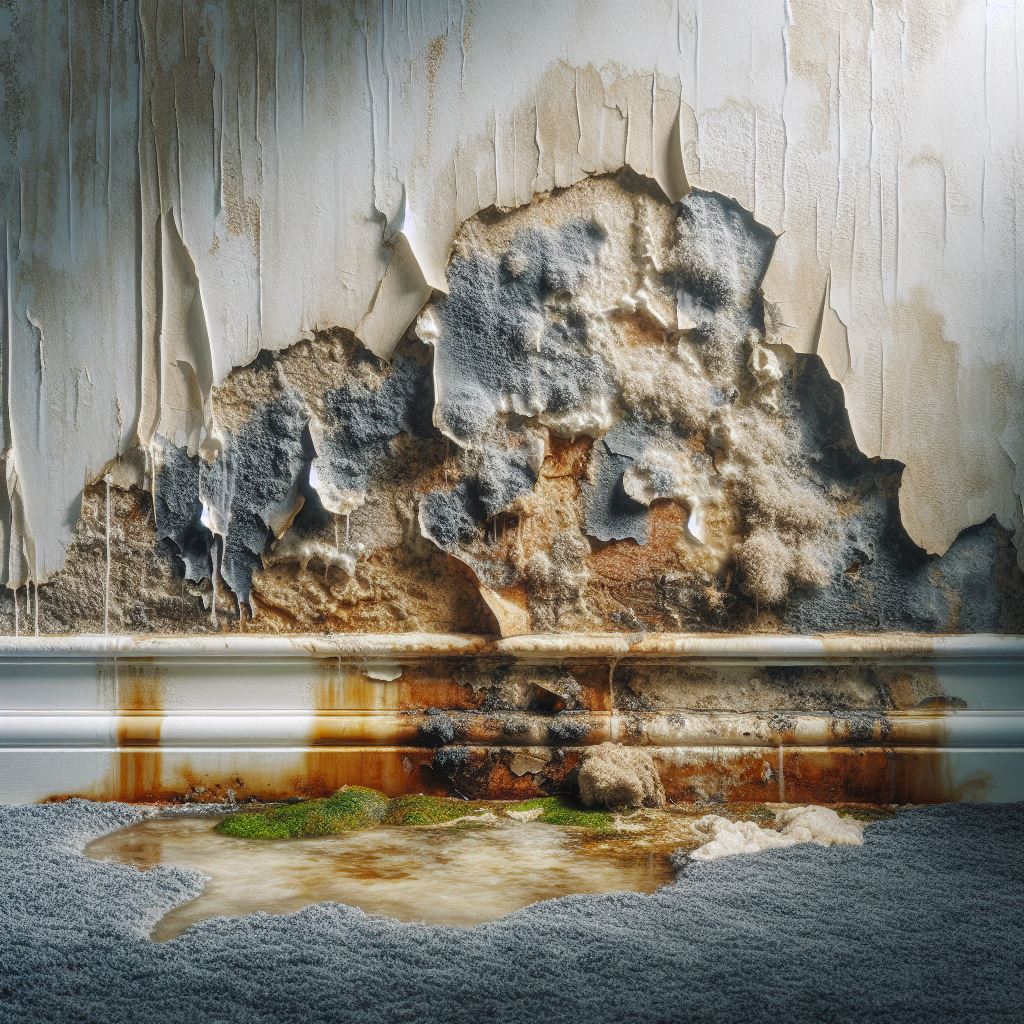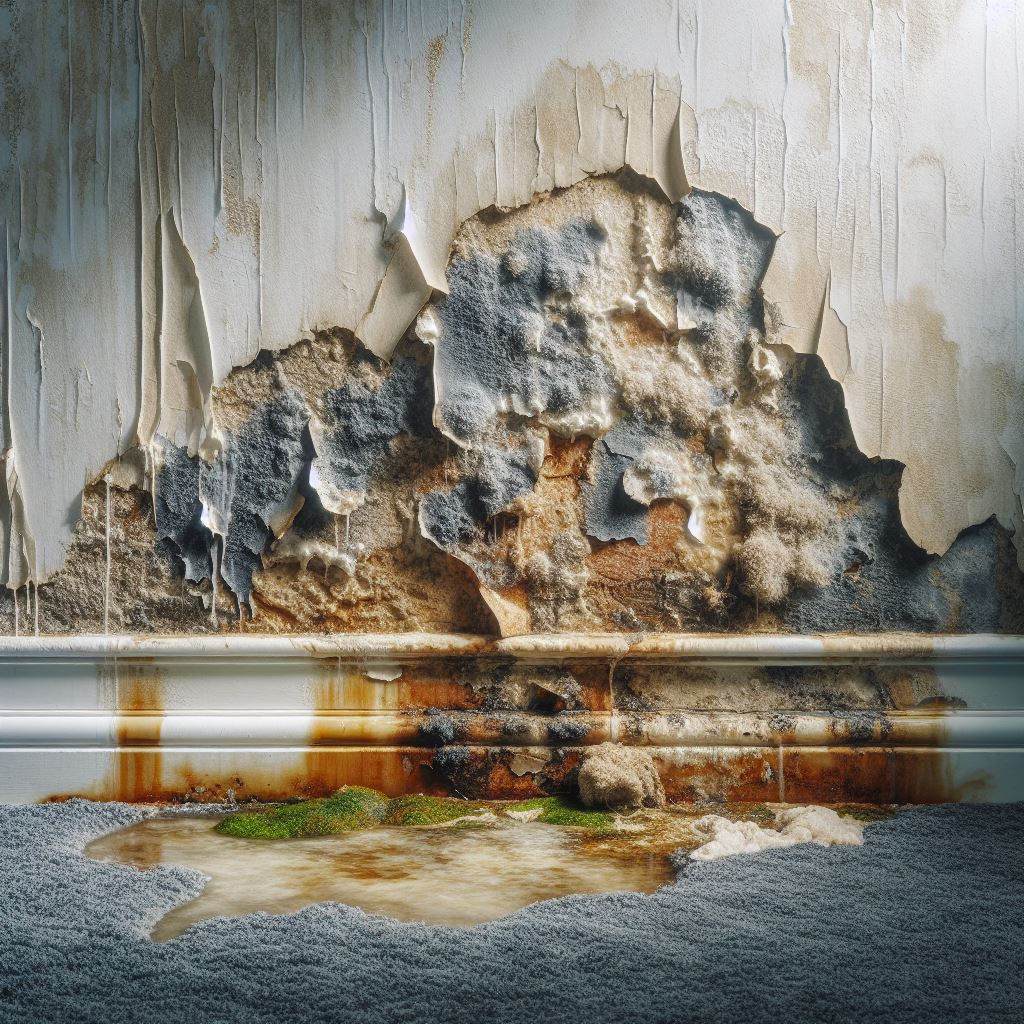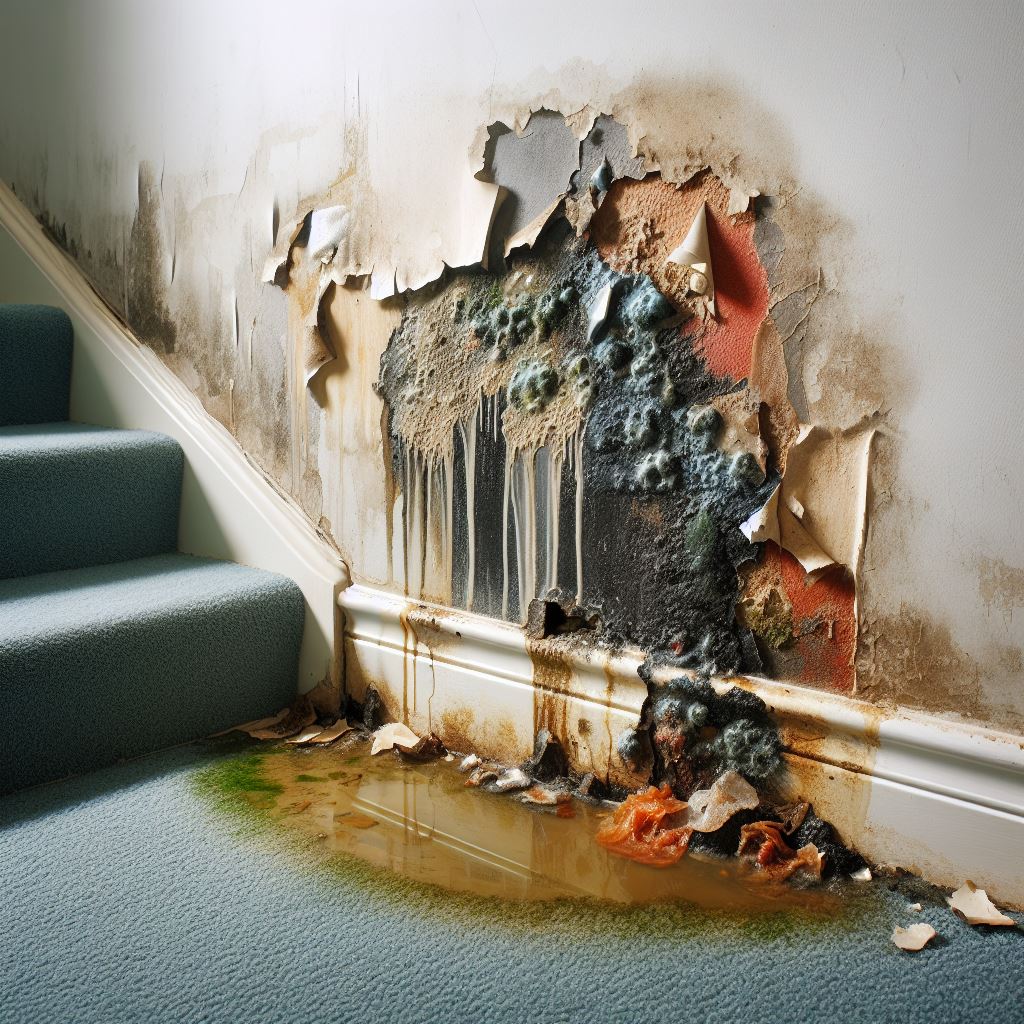Signs of Water Damage in Homes
Water damage is a common problem that homeowners may face, and it can lead to significant structural issues if left undetected. Home inspectors play a crucial role in identifying water damage during the inspection process. By carefully examining various areas of the home, they can pinpoint signs of water damage and provide homeowners with valuable information to address the issue promptly.

One of the most apparent signs of water damage is the presence of stains or discoloration on walls, ceilings, or floors. These stains often indicate that water has infiltrated the area and caused damage. Home inspectors carefully inspect these areas, looking for any signs of discoloration or staining that may suggest water damage. They may use moisture meters to measure the moisture content in affected areas, providing a more accurate assessment of the extent of the damage.
Another common indicator of water damage is the presence of mold or mildew. Mold thrives in damp environments, making it a telltale sign of water infiltration. Home inspectors are trained to identify mold growth and determine its cause. They may use specialized tools such as thermal imaging cameras to detect hidden moisture sources that may be contributing to mold growth. By identifying and addressing these issues, homeowners can prevent further damage and potential health hazards associated with mold exposure.
In addition to visible signs, home inspectors also pay close attention to odors that may indicate water damage. Musty or damp smells can be a strong indication of water infiltration. These odors often result from stagnant water or mold growth. Home inspectors use their keen sense of smell to detect these odors and investigate further to identify the source of the problem.
Home inspectors also inspect the exterior of the home for signs of water damage. They carefully examine the roof, gutters, and downspouts to ensure proper drainage. Clogged gutters or damaged downspouts can lead to water accumulation near the foundation, potentially causing water damage. Inspectors may also look for signs of water pooling or improper grading around the foundation, as these can contribute to water infiltration into the home.
Furthermore, home inspectors inspect the plumbing system for any signs of leaks or water damage. They examine visible pipes, faucets, and fixtures for signs of water stains, corrosion, or dripping. Additionally, they may use thermal imaging cameras or moisture meterss to detect hidden leaks behind walls or under floors. Identifying and addressing plumbing issues promptly can prevent further water damage and potential water-related emergencies.
Lastly, home inspectors may also assess the condition of the home’s insulation and ventilation systems. Poor insulation or inadequate ventilation can lead to condensation and moisture buildup, which can result in water damage over time. Inspectors may check for signs of condensation on windows, peeling paint, or warped wood, which can indicate excessive moisture levels.
In conclusion, home inspectors play a vital role in detecting water damage in homes. By carefully examining various areas of the home, including walls, ceilings, floors, plumbing systems, and the exterior, they can identify visible signs of water damage, such as stains, mold growth, and odors. They may also use specialized tools to detect hidden moisture sources and assess the extent of the damage. By identifying water damage early on, homeowners can take the necessary steps to address the issue promptly and prevent further damage to their homes.
Common Causes of Water Damage in Residential Properties
Water damage is a common issue that homeowners may face in their residential properties. It can lead to significant structural damage, mold growth, and other health hazards if not detected and addressed promptly. Home inspectors play a crucial role in identifying water damage during the inspection process. By understanding the common causes of water damage, inspectors can effectively detect and report any signs of water damage to homeowners.
One of the most common causes of water damage in residential properties is plumbing issues. Leaking pipes, burst pipes, and faulty plumbing fixtures can all result in water damage. Home inspectors are trained to look for signs of water stains, dampness, or mold growth around plumbing fixtures, such as sinks, toilets, and showers. They may also check for water pressure issues, which can indicate a potential plumbing problem.
Another common cause of water damage is roof leaks. A damaged or poorly maintained roof can allow water to seep into the property, leading to water damage and mold growth. During the inspection, home inspectors will carefully examine the roof for any signs of damage, such as missing or damaged shingles, cracked flashing, or clogged gutters. They may also look for water stains or discoloration on the ceilings or walls, which can indicate a roof leak.
Poorly sealed windows and doors can also contribute to water damage in residential properties. If windows or doors are not properly sealed, rainwater can enter the property, causing water damage and potential mold growth. Home inspectors will inspect the windows and doors for any signs of water intrusion, such as water stains, rotting wood, or mold growth. They may also check the caulking around the windows and doors to ensure it is in good condition and effectively sealing out water.
Basement and foundation issues can also lead to water damage in residential properties. Cracks in the foundation or basement walls can allow water to seep into the property, causing water damage and potential structural issues. Home inspectors will carefully inspect the basement and foundation for any signs of water intrusion, such as dampness, water stains, or mold growth. They may also check for proper drainage systems, such as sump pumps or French drains, to ensure they are functioning correctly.
In addition to these common causes, home inspectors may also look for signs of water damage caused by natural disasters, such as flooding or storms. They may inspect the property for any signs of water stains, mold growth, or structural damage that may have resulted from these events.
In conclusion, home inspectors play a vital role in detecting water damage in residential properties. By understanding the common causes of water damage, inspectors can effectively identify and report any signs of water damage to homeowners. Whether it is plumbing issues, roof leaks, poorly sealed windows and doors, basement and foundation problems, or damage caused by natural disasters, home inspectors are trained to carefully inspect the property for any signs of water damage. Their expertise and attention to detail can help homeowners address water damage issues promptly, preventing further damage and potential health hazards.
Importance of Water Damage Inspections in Homebuying Process
Water damage is a common issue that can have serious consequences for homeowners. It can lead to structural damage, mold growth, and health problems. Therefore, it is crucial to detect water damage before purchasing a home. Home inspectors play a vital role in this process, as they are trained to identify signs of water damage. In this article, we will explore the importance of water damage inspections in the homebuying process and discuss how home inspectors detect water damage.
One of the primary reasons why water damage inspections are essential is that they can reveal hidden issues that may not be apparent to the untrained eye. Water damage can occur in various forms, such as leaks, flooding, or moisture buildup. These issues can be concealed behind walls, under flooring, or in the attic. Without a thorough inspection, these problems may go unnoticed, leading to costly repairs down the line.
During a water damage inspection, home inspectors use a variety of techniques to detect signs of water damage. One of the first things they look for is visible water stains or discoloration on walls, ceilings, or floors. These stains can indicate a past or ongoing water issue. Inspectors also pay close attention to the texture of surfaces, as water damage can cause paint or wallpaper to bubble or peel.

In addition to visual cues, home inspectors rely on their senses to detect water damage. They may use moisture meters to measure the moisture content of materials such as wood or drywall. High moisture levels can indicate the presence of water damage. Inspectors may also use their sense of smell to detect musty odors, which can be a sign of mold growth resulting from water damage.
Furthermore, home inspectors inspect the exterior of the property to identify potential sources of water intrusion. They examine the roof for missing or damaged shingles, as well as clogged gutters or downspouts that can cause water to accumulate near the foundation. Inspectors also check the grading around the property to ensure that water is properly directed away from the house.
In some cases, home inspectors may use specialized equipment to detect water damage. Thermal imaging cameras can be used to identify hidden moisture or temperature differences that may indicate water intrusion. These cameras can detect water damage behind walls or under flooring without the need for invasive inspections.
It is important to note that home inspectors are not experts in every aspect of home construction. If they suspect significant water damage or mold growth, they may recommend further evaluation by a specialist, such as a mold inspector or a structural engineer. These professionals have the expertise and tools necessary to assess the extent of the damage and provide recommendations for remediation.
In conclusion, water damage inspections are a crucial part of the homebuying process. Home inspectors play a vital role in identifying signs of water damage that may not be apparent to the untrained eye. Through visual inspections, the use of specialized equipment, and their expertise, home inspectors can detect water damage and help potential homeowners make informed decisions. By investing in a thorough water damage inspection, homebuyers can avoid costly repairs and ensure the safety and integrity of their future homes.
Techniques and Tools Used by Home Inspectors to Detect Water Damage
How do home inspectors detect water damage?
Water damage is a common problem that homeowners face, and it can lead to significant structural issues if not addressed promptly. Home inspectors play a crucial role in identifying and assessing water damage in homes. They employ various techniques and tools to detect water damage accurately. In this article, we will explore the techniques and tools used by home inspectors to detect water damage.
One of the primary techniques used by home inspectors is visual inspection. During a visual inspection, the inspector carefully examines the interior and exterior of the property for any signs of water damage. They look for stains, discoloration, or peeling paint on walls and ceilings, as these can indicate water intrusion. Additionally, they inspect the foundation for cracks or dampness, which may suggest water damage.
In conjunction with visual inspection, home inspectors also use moisture meters to detect water damage. Moisture meters are handheld devices that measure the moisture content in various materials, such as wood, drywall, or concrete. By using a moisture meter, inspectors can identify areas with high moisture levels, which may indicate water damage. This tool is particularly useful in detecting hidden water damage behind walls or under flooring.
Another technique employed by home inspectors is thermal imaging. Thermal imaging cameras detect temperature differences in materials, allowing inspectors to identify areas of potential water damage. When water infiltrates a material, it often causes a temperature difference due to evaporation. By using thermal imaging, inspectors can locate hidden water damage that may not be visible to the naked eye.
To further investigate potential water damage, home inspectors may use borescopes. Borescopes are flexible cameras that can be inserted into small openings or cavities to inspect hard-to-reach areas. Inspectors can use borescopes to examine areas behind walls, under sinks, or in crawl spaces for any signs of water damage. This tool is particularly useful in identifying leaks or moisture buildup in confined spaces.
In addition to these techniques, home inspectors may also rely on their sense of smell to detect water damage. Water damage often leads to the growth of mold and mildew, which produce a distinct musty odor. Inspectors are trained to recognize this odor and use it as a clue to locate areas with potential water damage. By combining their visual inspection with their sense of smell, inspectors can identify areas that require further investigation.
It is important to note that while home inspectors are skilled at detecting water damage, they are not experts in repairing it. If water damage is identified during an inspection, homeowners should consult with a qualified professional to address the issue promptly. Ignoring water damage can lead to more significant problems, such as mold growth or structural deterioration.
In conclusion, home inspectors employ various techniques and tools to detect water damage accurately. Visual inspection, moisture meters, thermal imaging, borescopes, and the sense of smell are all valuable tools in their arsenal. By utilizing these techniques, home inspectors can identify water damage and provide homeowners with the information they need to address the issue promptly.





1 COMMENTS